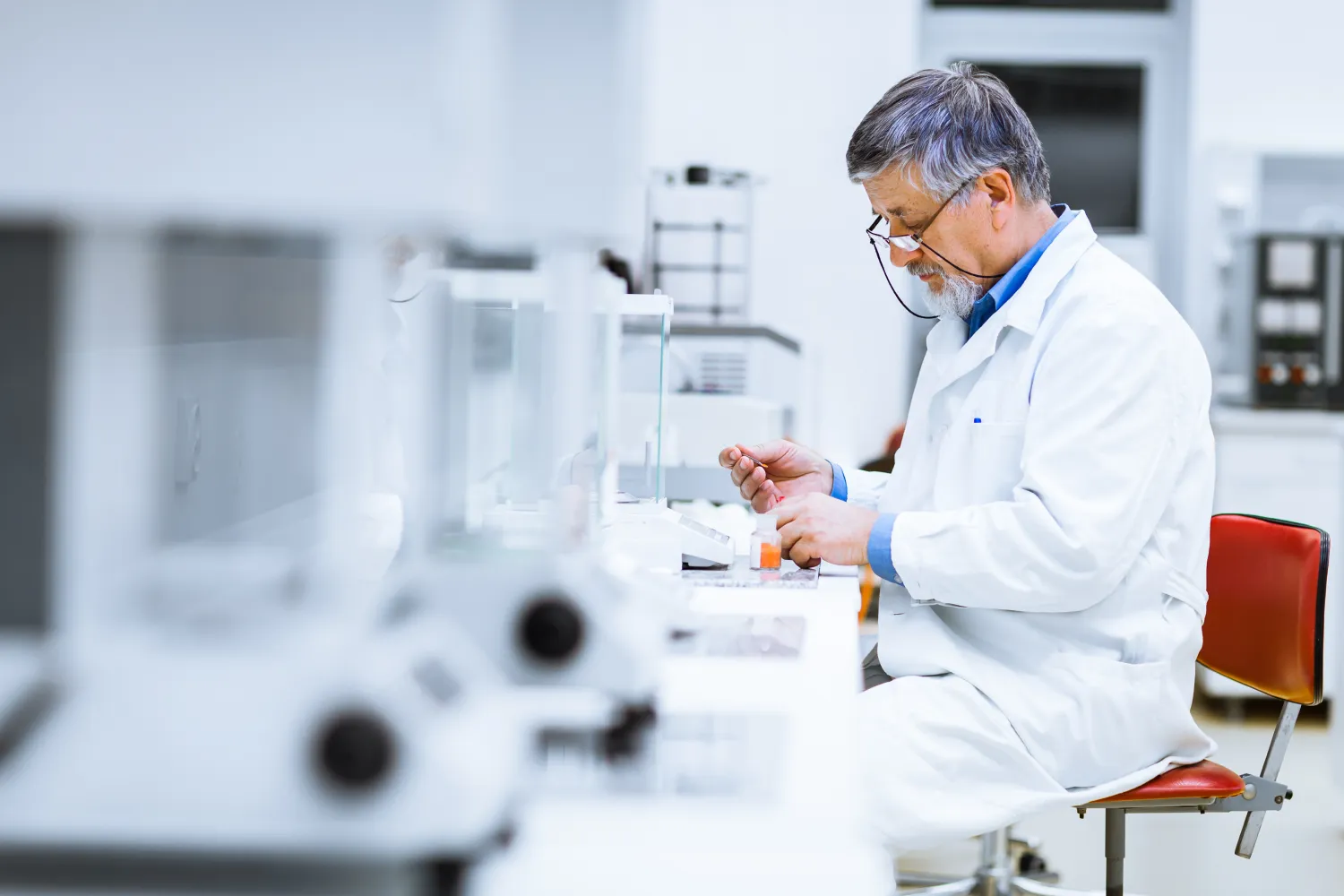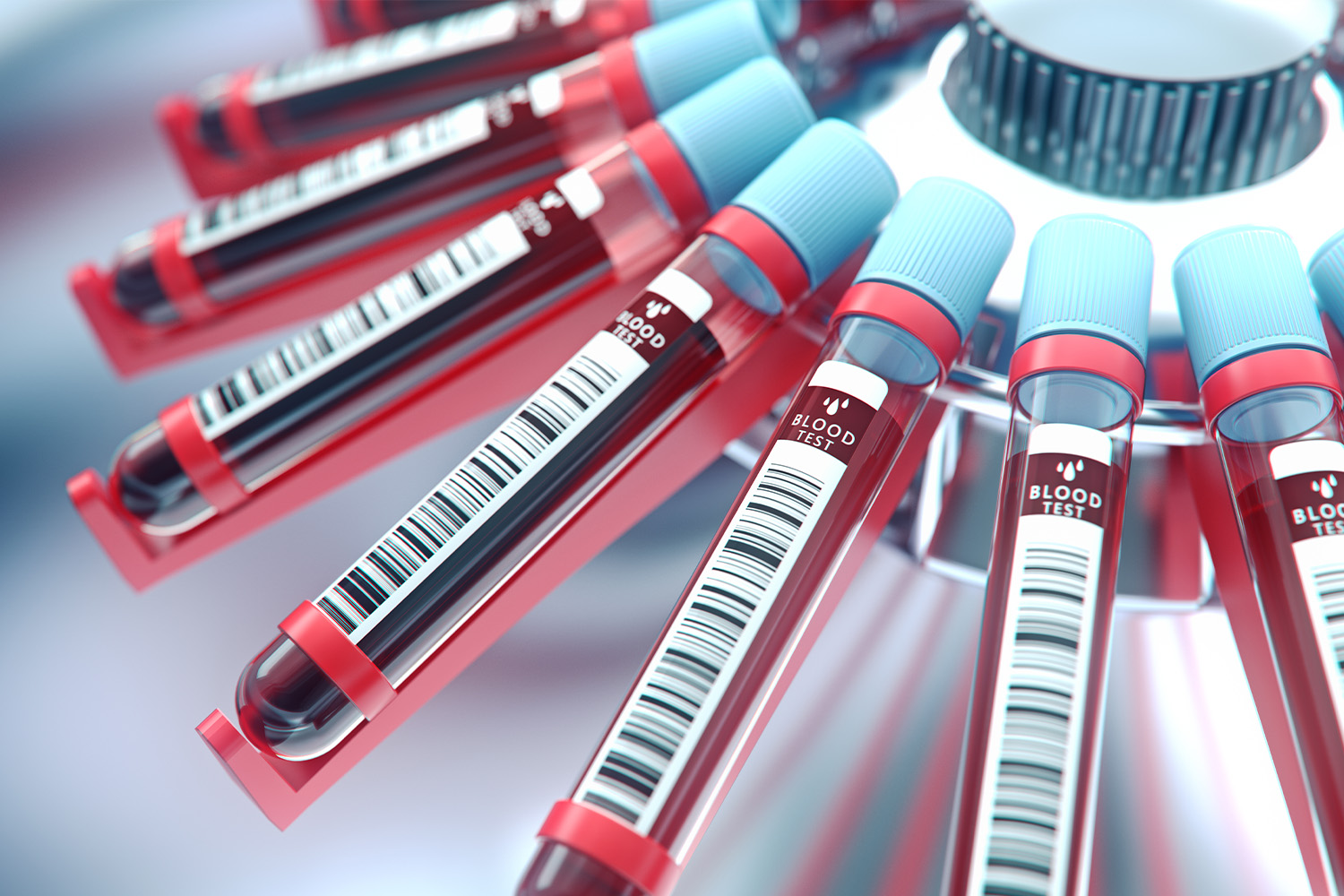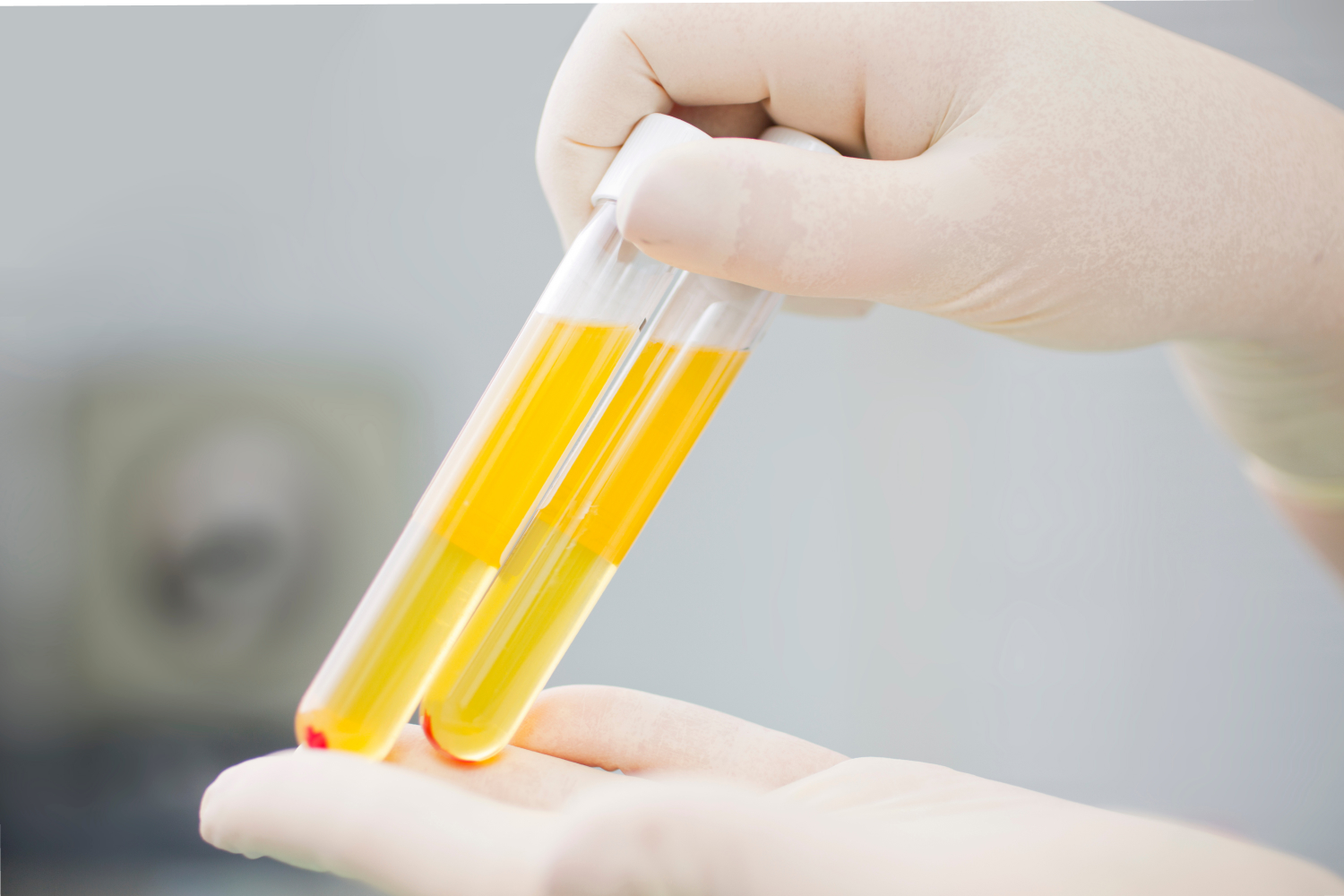Reviewed by | Melinda Hany, Registered Nurse
Serum and plasma are liquid portions of blood used in healthcare research and diagnostics. Although they both come from blood, they have important differences to be aware of. Researchers need to know the differences between serum vs. plasma so they can choose the right sample type for their studies.
Although some people may mistake serum for plasma and vice versa, these biospecimen samples have distinct properties that set them apart. “Serum is the clear liquid that remains after the sample has been centrifuged, removing clotting proteins and blood cells, while plasma is the straw-colored liquid that remains when clotting is prevented with the addition of an anticoagulant prior to centrifuging the sample,” notes Melinda Hany, Registered Nurse. These differences can affect test results and research outcomes.
Continue reading to learn more about serum vs plasma, their differences and similarities, and their applications.
Understanding Serum vs Plasma
The main difference between serum and plasma lies in what they are composed of — especially when it comes to clotting proteins. While both contain similar components such as antibodies, hormones, and electrolytes, plasma includes blood cells and clotting factors that serum lacks.
To discuss the characteristics and uses of serum and plasma, let’s explore their definitions and how they differ from each other.
Definition of Serum
Serum is a clear-colored liquid derived from blood that remains after blood has clotted (after the sample has been centrifuged). It is essentially blood minus its cellular components and clotting factors. This fluid contains a range of components, such as electrolytes, antibodies, hormones, and other proteins, but it does not include any blood cells or coagulants.
Serum is produced by allowing the blood sample to clot, which typically takes around 30 minutes to an hour. Following clotting, the sample is centrifuged to separate the liquid component (serum) from the cellular components and the fibrin clot.
Because serum does not contain clotting factors, it is often used in studies that do not require the evaluation of coagulation or where the presence of clotting factors may interfere with the results.
Definition of Plasma
Plasma is the straw-colored liquid portion of blood that contains blood cells, clotting factors, and other constituents. Plasma is rich in clotting factors and blood cells, as well as other proteins that are absent in serum. Anticoagulants can be added to blood samples to prevent clotting and maintain plasma’s composition.
The anticoagulant prevents the formation of fibrin, a protein that plays a key role in the clotting process, thereby retaining clotting factors in the sample. Plasma is also produced by centrifuging the blood sample, which separates the liquid component (plasma) from the cellular components.
Plasma is commonly used in coagulation studies or research that requires the presence of clotting factors for accurate results.
Advantages and Disadvantages of Serum vs Plasma
When comparing the use of serum and plasma in research or healthcare settings, researchers need to consider their advantages and disadvantages for specific applications.
Advantages and Disadvantages of Using Serum
One notable advantage of serum is the simplicity of collection and storage. It requires only blood clotting and centrifugation to separate the serum from the cellular components. In addition, serum is commonly used in diagnostic tests, such as serological testing and biomarker discovery, making it a familiar and standardized choice for many laboratories.
Despite its advantages, serum has some limitations. Its major drawback is the absence of clotting factors, which are essential for coagulation studies. Moreover, serum samples may be affected by interference from coagulation or hemolysis, potentially causing errors in biomarker measurements.
Advantages and Disadvantages of Using Plasma
Plasma offers a richer source of blood components, including blood cells, clotting factors, and various proteins, making it a suitable choice for a wide range of tests. Its versatility allows researchers to carry out proteomics, metabolomics, and coagulation studies with the same sample.
The main disadvantage of using plasma is its specialized collection and storage requirements, which may be more time-consuming and costly compared to serum. Plasma samples require the use of anticoagulants during collection, and proper storage conditions must be maintained to avoid contamination or degradation of analytes.
The choice between serum and plasma depends on the specific needs and objectives of a research or healthcare project. The type of analytes of interest, available equipment and resources, and sample processing considerations should be carefully evaluated to determine the most appropriate biospecimen for the study.
Which Should You Use: Serum or Plasma?
When deciding whether to use serum or plasma for a study, certain factors should be considered. These factors can help determine which blood derivative is more suitable for the specific research objectives of your project.
Research Objectives
When deciding between serum and plasma, it’s important to look at the types of analytes of interest. For example, if your study focuses on specific proteins, hormones, nutrients, or waste products, serum might be suitable. However, if your study requires the analysis of clotting factors or blood cells, plasma may be a better choice.
Another part of choosing serum or plasma for specific research objectives is the importance of clotting factors in the study. If the presence or absence of clotting factors could affect the outcomes or interpretation of the data, it may be necessary to choose a blood component that matches the needs of the research (e.g., plasma for coagulation studies).
Availability of Resources
Plasma requires specialized anticoagulated tubes and centrifugation steps for collection, as well as specific storage conditions. The collection and storage of serum, on the other hand, are typically simpler. Therefore, it’s important to have the available equipment and storage facilities that meet the needs of the chosen biospecimen.
Budgets and costs should also be taken into account when choosing the right sample. There are various costs associated with collecting, processing, and storing serum and plasma samples in the appropriate way. These costs can impact the decision-making process when resources are limited.
Sample Processing and Storage
How sensitive the serum or plasma sample is to external factors like time and temperature could also affect which might be the best choice. The stability of analytes in serum and plasma might vary depending on preanalytical conditions like temperature and the processing time.
You’ll want to make sure that your selected biospecimen type will remain stable under your lab’s specific conditions. For example, some components in EDTA plasma might be more stable than those in serum.
Consider the long-term stability of analytes within serum or plasma when developing protocols for biospecimen collection, processing, and storage. According to studies, the stability of certain analytes may differ between serum and plasma.
Popular Applications for Serum and Plasma
Serum and plasma are both valuable biofluids in research and healthcare, with each offering certain advantages depending on their applications. Let’s go through the popular uses of serum and plasma in various research and diagnostic settings.
Common Uses for Serum
Serum is widely used in serological assays to measure antibody levels in response to infections or vaccinations. This allows researchers to detect past or current exposure to pathogens like viruses and bacteria.
The proteins and other molecules found in serum can serve as potential biomarkers for various diseases, including cancer. By studying the differences in serum composition between healthy and diseased individuals, researchers can identify potential diagnostic markers or therapeutic targets.
Common Uses for Plasma
Plasma retains clotting factors, unlike serum, making it ideal for coagulation studies that analyze blood clotting disorders or monitor anticoagulant therapies.
Due to its rich composition and compatibility with various analytical techniques, plasma is often used in proteomic and metabolomic studies. These studies allow researchers to evaluate complex protein and metabolite networks, providing valuable insights into biological processes and disease mechanisms.
Novel Uses and Opportunities for Serum and Plasma
As healthcare research continues to evolve, innovative applications for serum and plasma are being developed.
For instance, liquid biopsies, which use biofluids like blood, urine, or cerebrospinal fluid, have emerged as promising non-invasive diagnostic tools. Liquid biopsies can help detect and monitor various diseases, including cancer, by identifying circulating tumor DNA (ctDNA), extracellular vesicles, or other biomarkers present in serum or plasma samples.
Another emerging application of serum and plasma is in personalized medicine. By analyzing individual patients’ biofluids, healthcare professionals can gain insights into their unique molecular profiles. Through these insights, healthcare professionals can create tailored treatment plans that target specific disease pathways or genetic mutations.
As researchers continue to uncover new applications for serum and plasma, the importance of understanding these biofluids and their roles in healthcare research and diagnostics will continue to grow. The ongoing advancements in these areas have the potential to greatly improve patient care and help us better understand various medical conditions and their underlying mechanisms.
High-quality Biospecimens for Your Research Goals
iProcess is a leading international provider of high-quality biospecimens, catering to a diverse range of organizations, including those involved in clinical trials, research, diagnostics, and pharmaceutical development. With a strong commitment to quality and an extensive collection of biospecimens, iProcess is dedicated to supporting healthcare research that may lead to new diagnostic methods and therapeutics.
Our comprehensive biospecimen offerings include serum, plasma, whole blood, urine, tissue samples, and other biological materials, sourced from well-characterized and diverse donor populations. We maintain strict adherence to industry standards and ethical guidelines to protect the integrity and reliability of our biospecimens.
In addition to providing high-quality biospecimens, iProcess offers comprehensive support services, such as sample processing, storage, and shipping, to streamline the research process for clients.
For further details or a quote on our biospecimen offerings and services, contact iProcess. Let us be your partner in advancing healthcare research and improving patient outcomes.
Sources:
Serum or Plasma (and Which Plasma), That Is the Question | ACS
Serum or Plasma? An Old Question Looking for New Answers | PubMed
Sample Management: Stability of Plasma and Serum on Different Storage Conditions | PubMed




